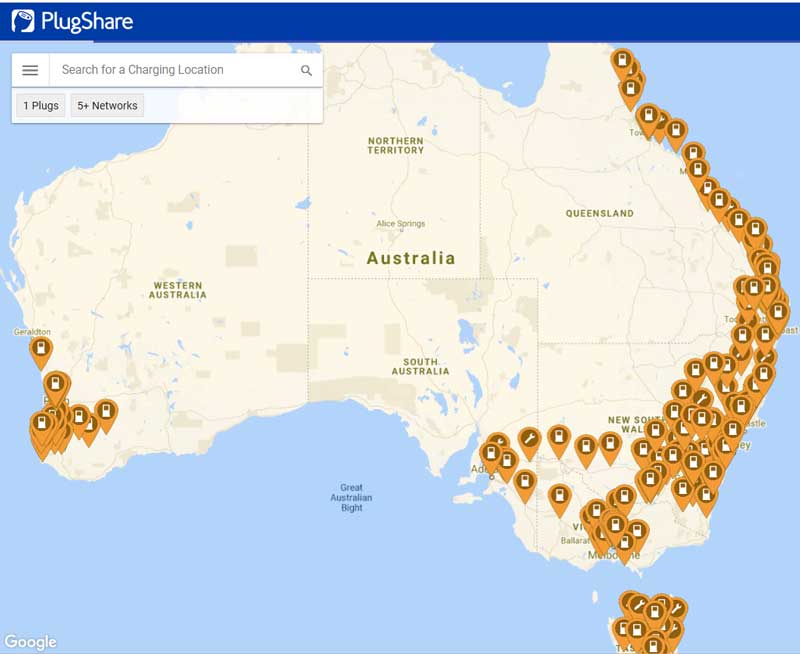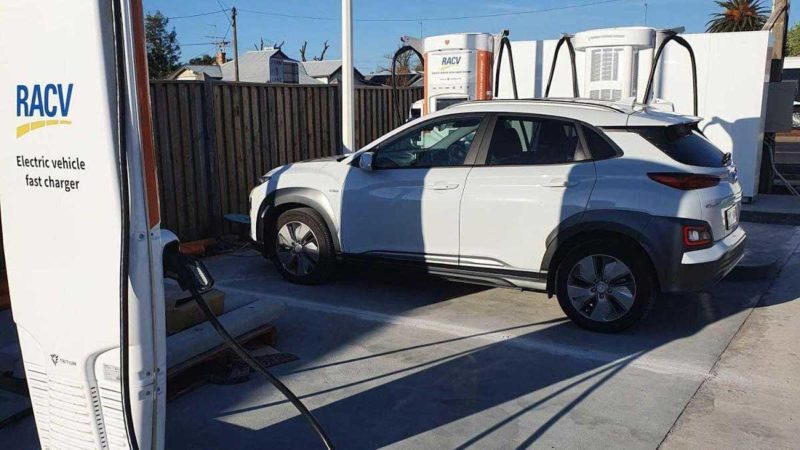The long-awaited first phase of the Melbourne to Adelaide DC fast-charger route has just been completed – with the announcement of the opening of the Horsham Chargefox/RACV charging site.
Marty Andrews, CEO of Chargefox says it is the company’s seventh Victorian ultra-rapid electric vehicle charging station at Horsham, which is powered by 100 per cent renewable energy and connects with Chargefox stations in South Australia.
Looking at the bigger picture: it is now possible to drive from Port Douglas to Adelaide in no more time than it takes to drive an ICE vehicle thanks to the DC fast chargers that now lie along that coastal route. And, thanks to the NRMA, in NSW that same ease of travel is possible taking routes as far inland as the New England highway, or even using the Newell from Coonabarabran south.

As can be seen from the above map, the path for EVs to travel in similar times as ICE vehicles between rural centres now covers a good chunk of Australia’s population.
This is despite the little federal government support in the way of an EV transition policy, and (thus far) the heavy lifting in terms of policy and money has been done by state governments (particularly Queensland) and motorists associations (particularly the NRMA in NSW).
Thankfully, now the Victorian Government is moving in the direction of supporting the EV transition and a net zero carbon future.
The Victorian government minister for energy, environment and climate, Lily D’Ambrosio, said on the opening of the Horsham facility: “We have funded the construction of Australia’s fastest electric vehicle charging stations. This investment supports the uptake of electric vehicles, improves air quality and positions us to achieve net zero carbon emissions by 2050.”
In the meantime, intrepid EV owners travelling away from home, but outside of the current DC charger network, can carry portable DC chargers (albeit rather expensive ones) and high power AC chargers for places where DC chargers are yet to be installed – meaning there is little to hold back the determined EV driver.
However, for the average future EV owner wanting to take a road trip – there is still a way to go before DC fast-charging is as ubiquitous as outback roadhouses now are. That section of the DC network is still to come. That will inevitably happen with, or without, Federal Government support.
However, just like our ongoing transition of electricity generation to renewable sources – that path can be rocky or smooth, depending on the level of overarching policy support that governments are supposed to provide ….
See also: Why are there no off grid electric vehicle charging stations?

Bryce Gaton is an expert on electric vehicles and contributor for The Driven and Renew Economy. He has been working in the EV sector since 2008 and is currently working as EV electrical safety trainer/supervisor for the University of Melbourne. He also provides support for the EV Transition to business, government and the public through his EV Transition consultancy EVchoice.

